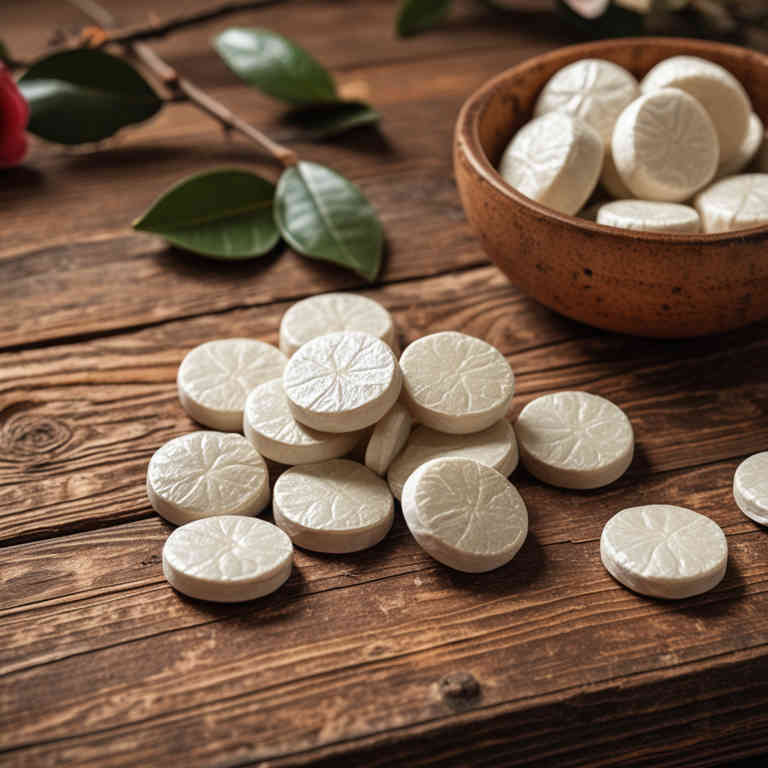Camellia sinensis lozenge for medicinal use

Camellia sinensis lozenge is a herbal preparation made from the leaves of the Camellia sinensis plant, which is the source of tea.
It is commonly used in herbalism to soothe sore throats and reduce inflammation due to its mild astringent properties. The lozenge form allows for slow release of active compounds, providing prolonged relief. It is often recommended for individuals suffering from colds, coughs, or other respiratory irritations.
This preparation is valued for its natural ingredients and gentle action on the body.
Uses
Camellia sinensis lozenge has been used to soothe sore throats and reduce coughing for centuries, particularly in traditional Chinese medicine.
Historically, it was valued for its ability to calm inflammation and promote healing in the throat, often prepared with additional herbs to enhance its effects. In modern times, these lozenges are popular as natural remedies for cold and flu symptoms, leveraging the antioxidant and anti-inflammatory properties of Camellia sinensis. They are also used in oral care products to freshen breath and prevent oral infections.
Today, they remain a widely recognized herbal preparation for respiratory and throat health.
Benefits
Camellia sinensis lozenge has health benefits such as promoting oral hygiene, reducing bad breath, and soothing sore throats.
It contains antioxidants that help combat free radicals in the body, supporting overall immune function. The lozenge form allows for slow release of its active compounds, enhancing their effectiveness in the mouth and throat. It may also aid in reducing inflammation and improving gum health.
Regular use can contribute to better dental care and overall wellness.
Constituents
Camellia sinensis lozenge active constituents include caffeine, theobromine, theophylline, and various polyphenols such as catechins, particularly epigallocatechin gallate (EGCG).
These compounds contribute to the lozenge's stimulating effects and potential antioxidant properties. Caffeine and theobromine act as central nervous system stimulants, enhancing alertness and reducing fatigue. The polyphenols in Camellia sinensis are known for their anti-inflammatory and antimicrobial benefits, which may support oral health.
Additionally, these constituents may aid in improving metabolism and promoting a sense of well-being when consumed as a lozenge.
Preparation
To make Camellia sinensis lozenge, first steep 1-2 teaspoons of dried Camellia sinensis leaves in boiling water for 5-10 minutes to create a strong tea infusion.
Strain the liquid and allow it to cool slightly. Next, mix the cooled tea with a small amount of honey or a sweetener of choice to achieve a syrupy consistency. Pour the mixture into a silicone mold or a shallow container and let it set in the refrigerator for several hours or until firm.
Once set, remove the lozenges from the mold and store them in an airtight container in a cool, dry place.
Side Effects
Camellia sinensis lozenge may lead to increased alertness and a mild stimulant effect due to its caffeine content.
It is commonly used for its potential to soothe sore throats and reduce coughing. However, excessive use can result in insomnia, anxiety, or gastrointestinal discomfort. Individuals sensitive to caffeine may experience heart palpitations or restlessness.
Long-term consumption might contribute to dependency or disrupt sleep patterns.